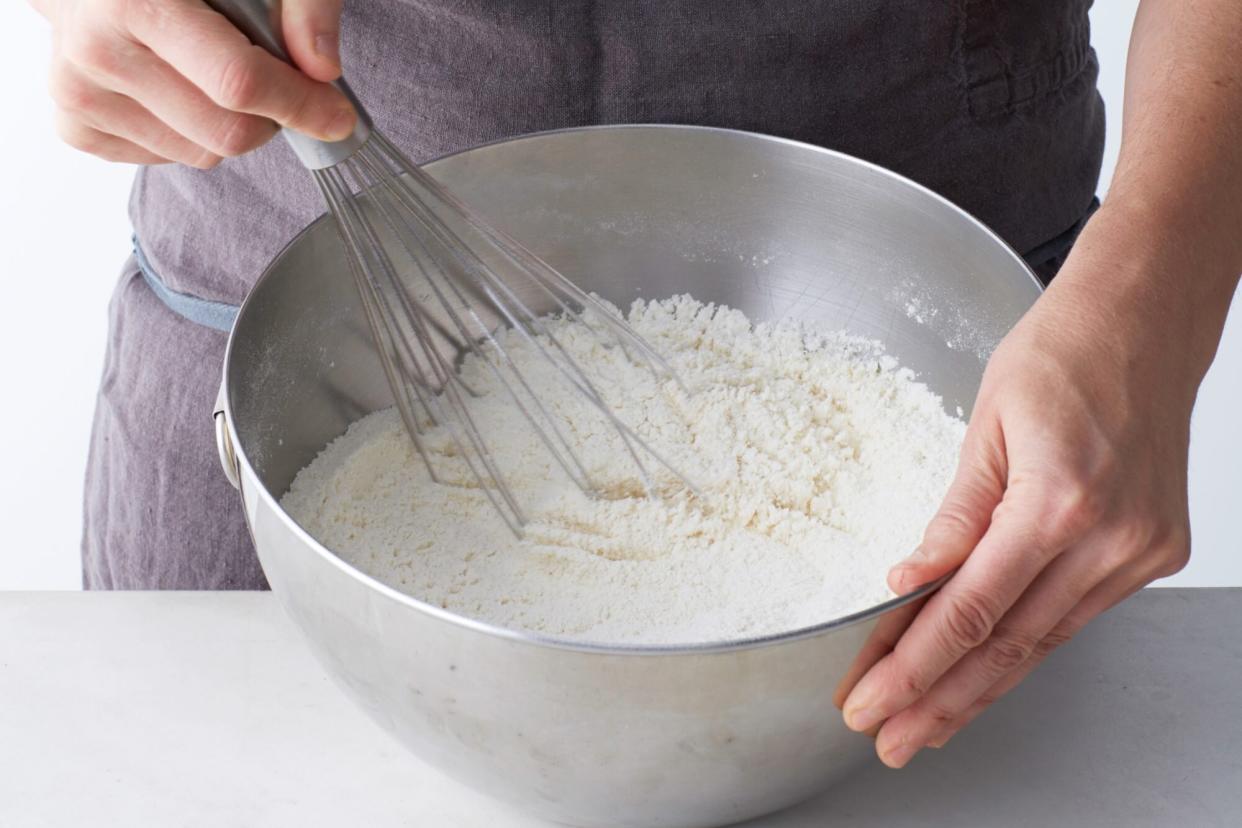5 Most Common Types of Flour—and How to Sub One for Another

Bryan Gardner
I consider myself a prolific home baker, turning out cookies, cakes, biscuits, muffins, quick breads, and more on the regular. Occasionally, I may bake a pie or tart. And recently, I've hopped on the sourdough train. Rarely do I let a few days pass without baking something from scratch.
As a result, I try to keep my pantry stocked with everything I could ever need to bake at a moment's notice. However, I live in a New York City apartment with a galley kitchen, so finding enough storage space is a struggle. As much as I would like to stock each and every flour I can find, space constraints force me to be minimal, so I can only keep the ingredients that I'm most likely to use. Thus, I've come to rely on the basics. As a way to help you stock your own pantry, I'm outlining a few of the most commonly used types of flour, and sharing my thoughts on whether or not you need to keep a regular stash of each.
Related: The Mysteries of Sponge Cake Explained
The Basics: Hard and Soft Wheat
First, though, it helps to understand what defines each type, and what distinguishes one flour from another. Most common flours are derived from wheat, either hard or soft. Of the two, hard wheat is higher in protein, and protein is what allows baked goods to develop gluten. The amount of protein (and thus gluten) determines whether the texture, or crumb, will be soft and tender, or hearty and chewy—or anywhere in between. Anything baked with hard (i.e., high protein) wheat is generally stronger and more dense (think bread). Soft wheat is lower in protein and produces a lighter, more tender crumb (think cakes). Choosing the right flour obviously makes a big difference in how successful a baker you will be. Of the flours available in most supermarkets, protein contents run from about 5 to 14 percent—a considerable range.
Most Common Types of Flour
All-Purpose Flour
As its name suggests, and with a protein content of 10 to 12 percent (depending on the brand), all-purpose flour is the best choice for a wide variety of baked goods, from simple-to-mix to spectacularly involved. It's a combination of hard and soft wheat.
Cake Flour
With the lowest protein content, generally from 5 to 8 percent, cake flour is the best choice for cakes, naturally, but it's not essential for all cakes. It works best for super light and airy cakes like angel food and chiffon. (Rich pound cakes and other buttery desserts generally call for all-purpose flour.)
Pastry Flour
Often used for more delicate baked goods like biscuits and scones, and for traditional pastries, pastry flour has 8 to 9 percent protein.
Self-Rising Flour
Made from softer wheat, self-rising includes a leavening agent (baking powder) and a tiny amount of salt. It's used in many Southern recipes, and has a protein content of 8 to 9 percent.
Bread Flour
Has the highest protein content of the supermarket flours, averaging 12 to 14 percent.
How to Use All-Purpose Flour as a Substitute for Other Flours
Because of its versatility and wide availability, all-purpose flour takes up the biggest spot on my baking shelf. I like that I can use it to "make" other flours as well. Cake flour, for example, can be made at home by swapping out 2 tablespoons from 1 cup of all-purpose flour with an equal amount of cornstarch. Since I can't always find cake flour at my local supermarket, I rely on this formula often, especially when baking this favorite birthday cake.
To make self-rising flour, try adding 1 ½ teaspoons baking powder and ¼ teaspoon salt to 1 cup of all-purpose flour. You can make bread flour with a similar trick: Try replacing some of the all-purpose flour with an equal amount of vital wheat gluten (1 ½ tablespoons per cup), which is increasingly available in supermarkets (Bob's Red Mill makes a popular one). It's also possible to skip bread flour altogether and just use all-purpose flour in its place. The bread may not rise quite as high, but you will likely still end up with a nice, tasty loaf.
Of course, many professional bakers don't abide by these flour hacks, arguing that the crumb and overall texture will never be quite as good. But if you are baking for your friends and family rather than for a panel of judges in a baking competition, chances are you will be just fine.

